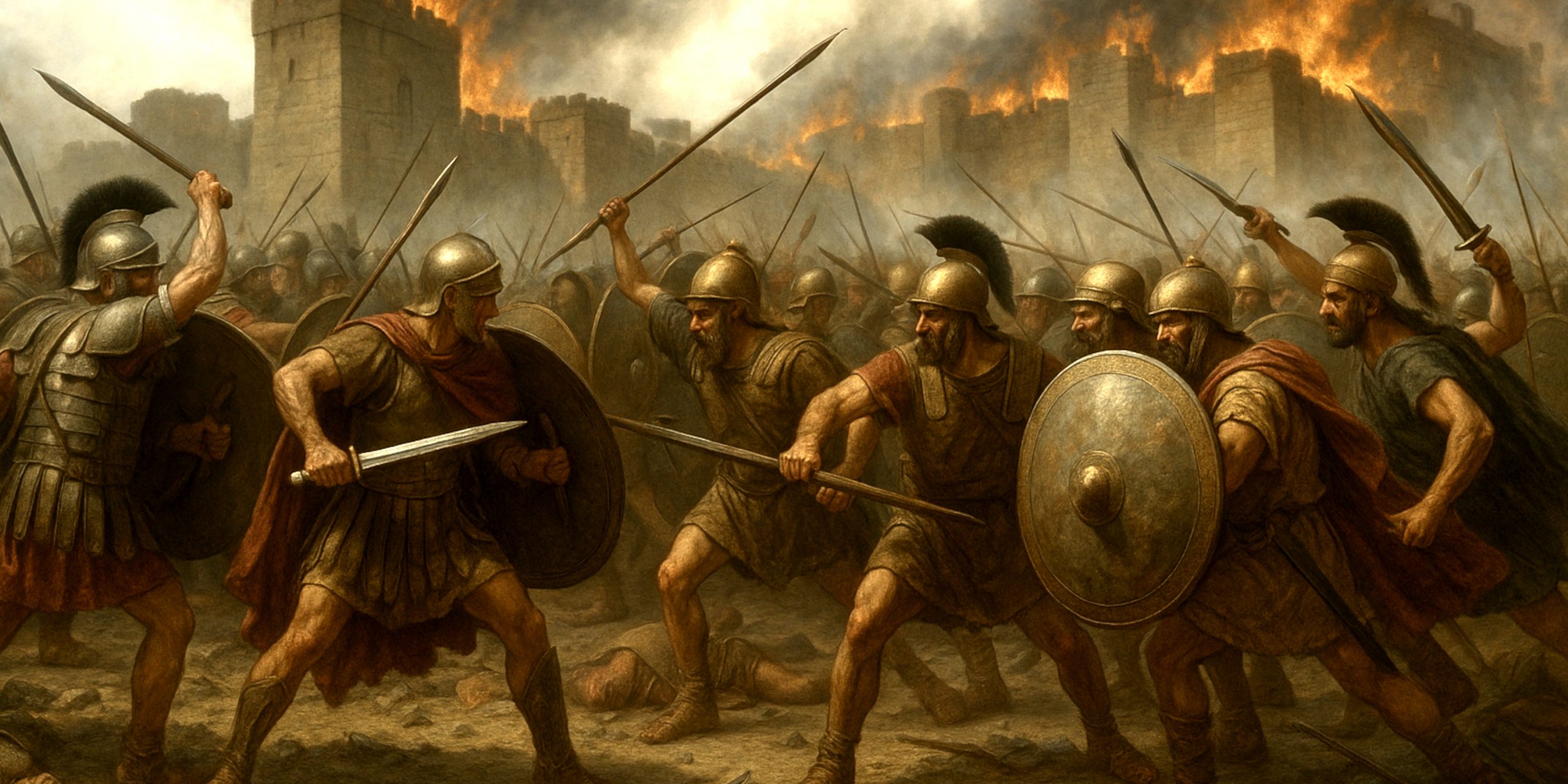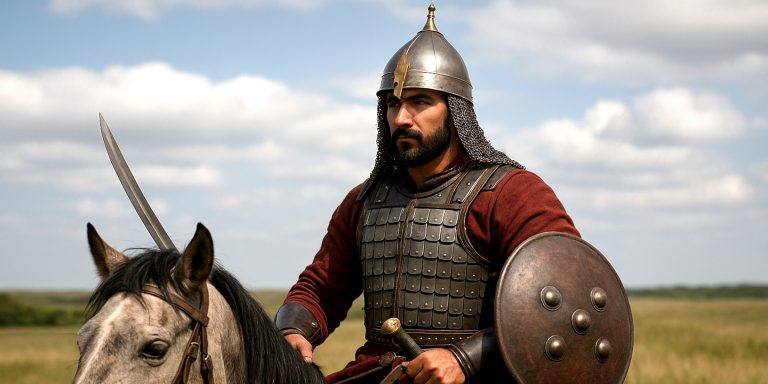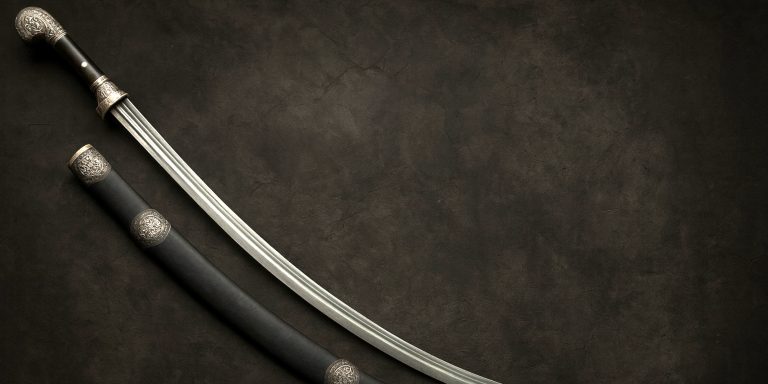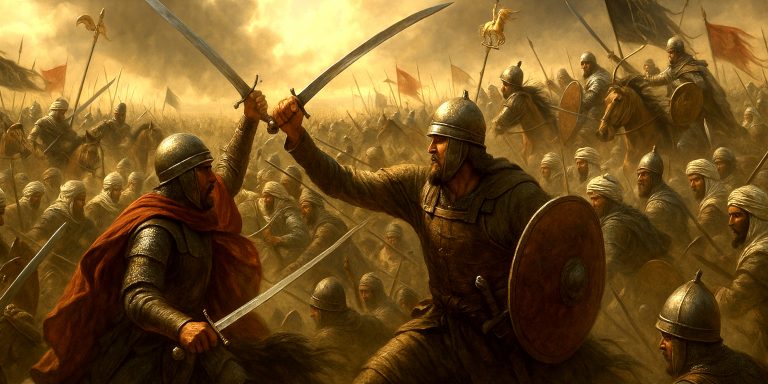
The Battle of Corinth in 146 BC was more than the fall of a city. It marked the final shattering of Greek independence and the absolute dominance of Rome in the eastern Mediterranean. Corinth, once a symbol of Greek wealth, artistry, and maritime reach, became a warning to every city that dared defy Roman authority. Livy put it rather succinctly, if coldly: “Corinth was destroyed so that others might learn to obey.”
It was the brutal punctuation mark at the end of centuries of Greek political power, and, for all its tragedy, a fascinating study in how culture, strategy, and arrogance collide.
Background
Corinth was a wealthy and strategic city controlling the Isthmus that linked the Peloponnese with mainland Greece. By the mid-second century BC, the Achaean League, of which Corinth was a leading member, found itself increasingly at odds with Rome’s encroaching power.
The Romans, led by Lucius Mummius, were not in a mood for diplomacy. After their victory over Macedon, Greece was already little more than a Roman protectorate. The Achaean revolt of 146 BC was, in hindsight, an act of political suicide.
Polybius, who witnessed much of the League’s decline, lamented: “They rushed headlong into ruin, blind to the power that shadowed them.”
Forces
| Side | Commander | Estimated Troops | Composition |
|---|---|---|---|
| Roman Republic | Lucius Mummius | ~23,000 infantry, 3,500 cavalry | 2 Roman legions, allied Italian cohorts, Greek auxiliaries |
| Achaean League (Greece) | Critolaus of Megalopolis (later Diaeus) | ~14,000 infantry, 600 cavalry | Hoplites, light infantry, mercenaries, local levies |
The imbalance was not only numerical but organisational. The Roman forces were hardened veterans of Macedonian and Iberian campaigns. The Achaeans, meanwhile, were an exhausted coalition fighting for pride rather than survival.
Arms and Armour
Roman Republic
- Primary weapons: Gladius Hispaniensis (short stabbing sword), pilum (heavy javelin)
- Armour: Segmentata or chain mail (lorica hamata), bronze helmet, large rectangular scutum shield
- Tactics: Cohesive manipular formations, with disciplined rotation and supporting missile units
Achaean League
- Primary weapons: Xiphos (short sword), dory (spear), kopis (curved cutting sword used by cavalry)
- Armour: Bronze cuirass or linothorax, small round shield (aspis), Corinthian and Boeotian helmets
- Tactics: Phalanx formations with inconsistent command structure
The contrast could not be starker. Roman discipline and flexibility made the Greek phalanx look outdated, despite its glorious past. As one Roman soldier reportedly remarked after the battle, “Their shields were fine for art, ours were made for war.”
The Battle
The Achaeans made a desperate stand outside the city. Despite initial resistance, the phalanx buckled under Roman pressure and encirclement tactics. The cavalry was routed, and the remaining infantry fell back to the walls of Corinth.
When Mummius’ legions breached the city, the result was catastrophic. Corinth was sacked, men slaughtered, women and children sold into slavery, and its treasures carried to Rome. The temples were stripped of art so fine that even Mummius, by all accounts an uncultured man, issued strict orders that any soldier damaging the plunder would have to replace it “with one of equal value.” The irony, of course, was that he had no idea what that value might be.
Polybius later recorded the horror: “The city that had stood as the light of Greece was left a void, a cinder heap of what had been beauty itself.”
Battle Timeline
| Year/Date | Event |
|---|---|
| 147 BC | The Achaean League defies Roman authority; Critolaus leads the revolt. |
| 146 BC (Early) | Critolaus is defeated at Scarpheia; Diaeus takes command. |
| 146 BC (Spring) | Roman legions advance south under Lucius Mummius. |
| May 146 BC | Battle fought outside Corinth; Achaeans crushed. |
| Aftermath (146 BC) | Corinth looted and burned; survivors enslaved. Greece formally annexed into the Roman province of Achaea. |
Archaeology
Archaeological excavations at Corinth have revealed stark layers of destruction dating precisely to 146 BC, marked by ash, toppled walls, and scattered bronze fragments. Beneath the later Roman reconstruction, the charred remains of workshops and pottery kilns bear witness to the thoroughness of Mummius’ sack.
Several items found in situ include:
- Broken bronze helmets with Achaean designs
- Roman gladius blades bent from heavy combat
- Melted figurines and temple fragments, likely toppled during the fires
- Coin hoards, buried hastily and never reclaimed
The Roman city rebuilt atop these ruins became a vital colony under Julius Caesar a century later, a symbol of both the brutality and regeneration that defined Roman imperialism. The archaeological record is a silent, smouldering reminder of how swiftly civilisation can be reduced to rubble by ambition and arrogance.
Legacy
The destruction of Corinth signified more than the defeat of an army. It ended Greek autonomy, extinguished the Achaean League, and confirmed Rome as the supreme power in the Mediterranean.
Yet, in a twist of history’s wry humour, Roman culture would soon become thoroughly Hellenised. Greek art, philosophy, and architecture became the backbone of Roman intellectual life. The conquerors absorbed the conquered so completely that Cicero later declared, “Though we subdued Greece, Greece has captured us with her culture.”
A fitting epitaph, perhaps, for a city that once ruled trade, only to become a ruin that ruled memory.
Watch the documentary:



